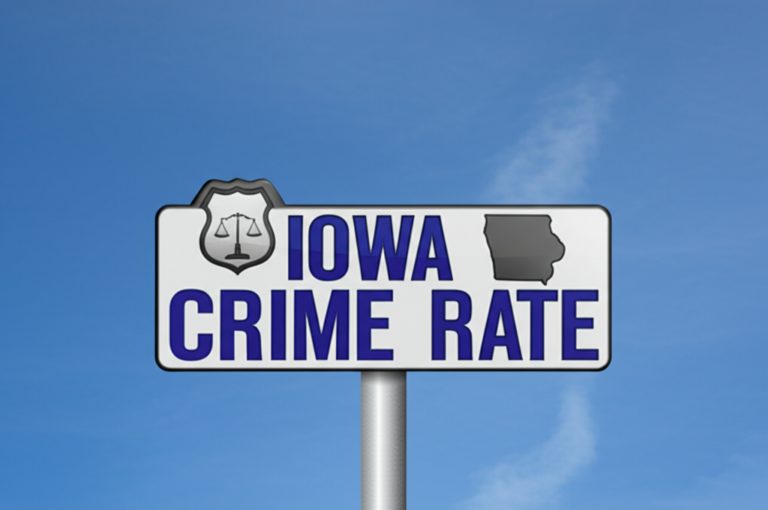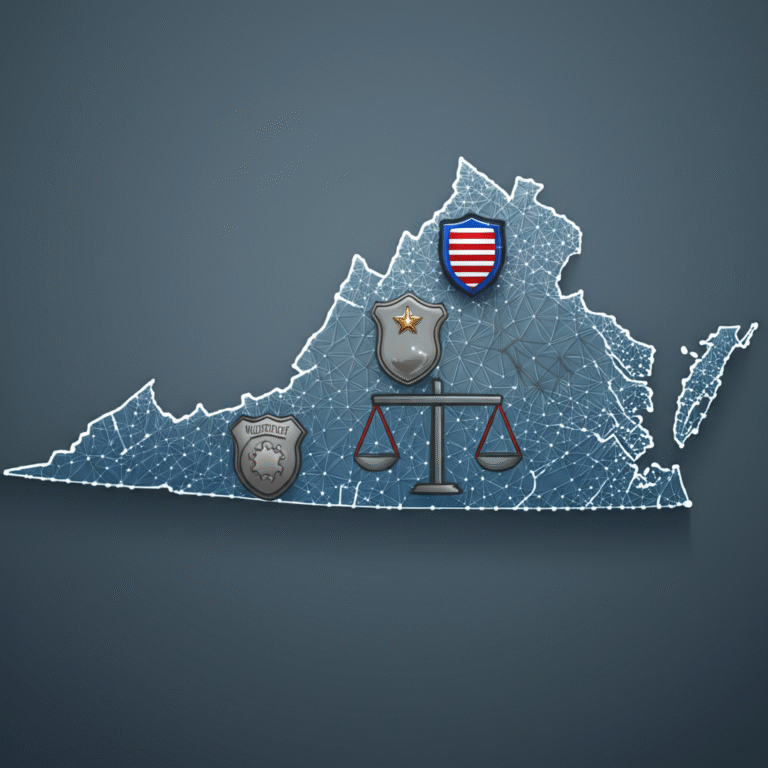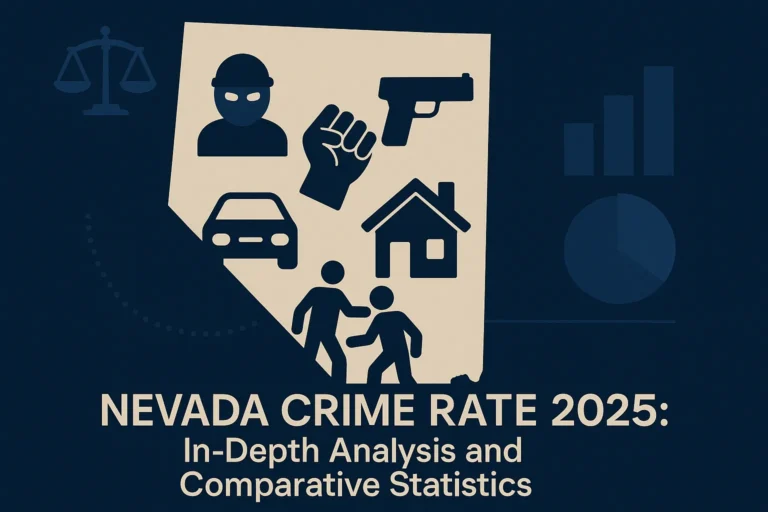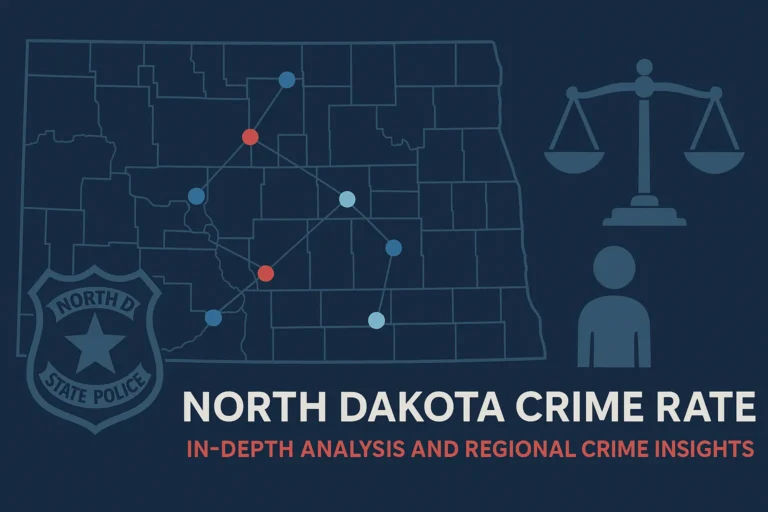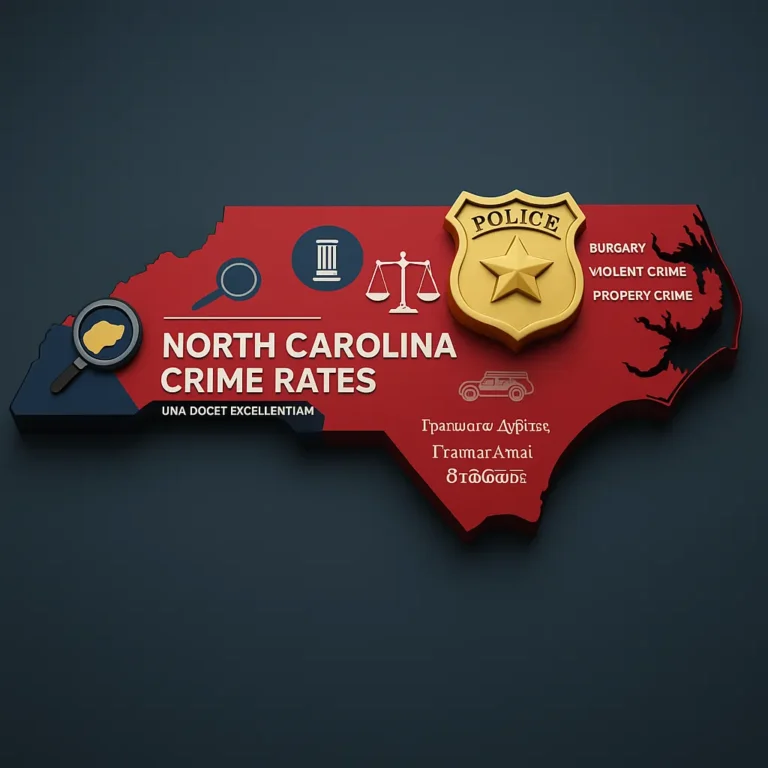Utah Crime Rate: Comprehensive Crime Statistics and City Safety Analysis
Imagine living in a place where understanding the safety around you goes beyond just feeling secure. Utah is such a place where knowing about crime and the efforts of law enforcement plays a major role in fostering public safety. The discussion around criminal justice and crime statistics in this region reveals much about the challenges and strengths of its communities. These statistics are vital not only for measuring the crime rate but also for shaping effective policies and promoting justice within society.
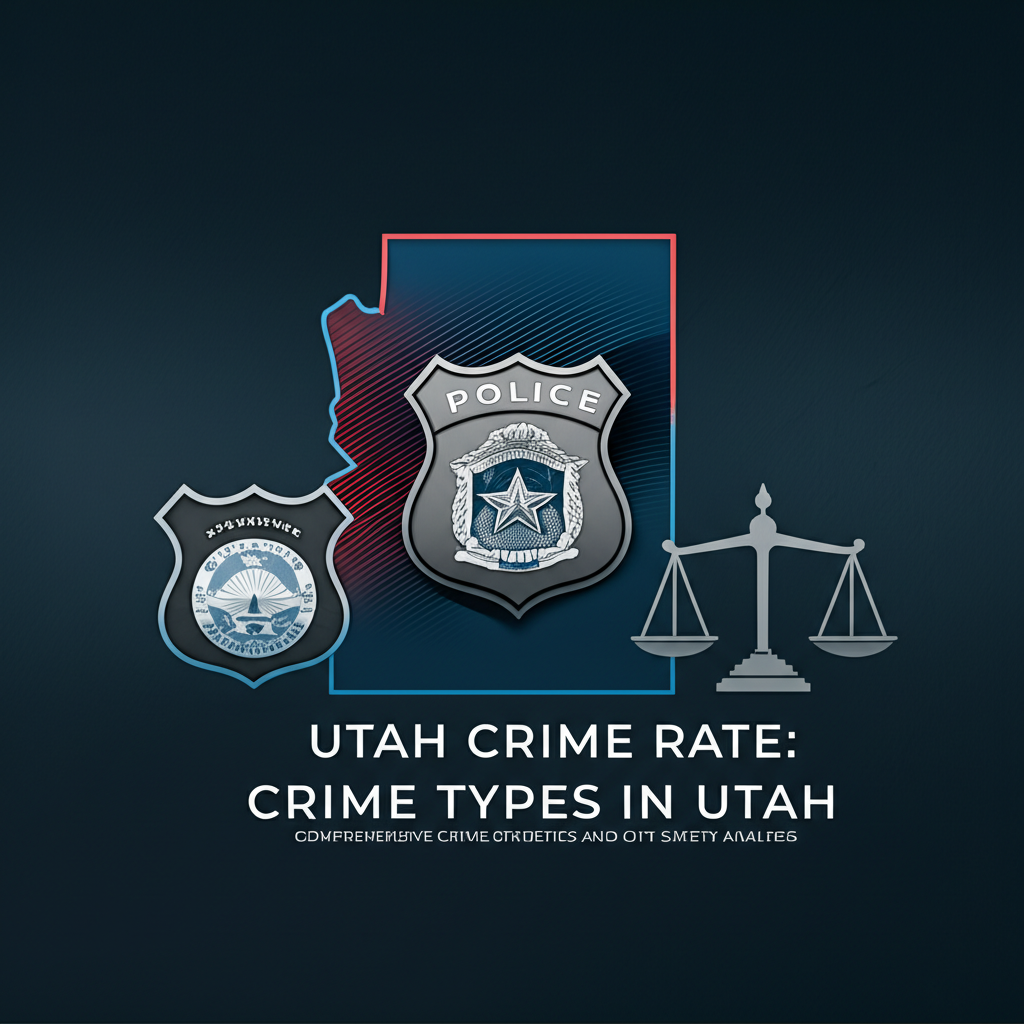
Exploring the layers behind these numbers opens a window into the social issues that influence safety and provides a clearer picture of the ongoing efforts to maintain calm and security. Let’s explore what these details convey about Utah and how they frame the state’s approach to law and safety.
- Utah experiences a total crime rate of 18.64 per 1,000 residents, combining both violent and property crimes.
- Crime statistics provide insights into public safety, law enforcement efficiency, and social challenges within the state.
- Understanding detailed crime data supports community safety initiatives and policy development.
Overview of Crime Types in Utah
In Utah, crimes reported span various categories but mainly split between violent crime and property crime. The total number of incidents reaches over 63,000, illustrating the different degrees and kinds of offenses experienced across the state. A vast majority belong to property-related crimes, which far outnumber acts of violence. These figures serve as crucial markers for understanding the scale of unlawful activities. They guide efforts concerning public safety and help officials focus on appropriate legal action and preventative strategies. Such distinctions in crime types allow the community and authorities to better analyze patterns and prioritize resources to protect residents effectively.
- Total crimes reported include over 63,000 incidents, split between violent and property crimes.
- Property crimes significantly exceed violent crimes in number and rate per 1,000 residents.
- Crime rates are key indicators for understanding the scope and nature of offenses in Utah.
| Crime Category | Total Cases Reported | Rate per 1,000 Residents |
|---|---|---|
| Total Crimes Reported | 63,692 | 18.64 |
| Violent Crime | 7,936 | 2.32 |
| Property Crime | 55,756 | 16.31 |
Detailed Violent Crime Statistics and Analysis
When examining the specifics of violent crime in Utah, almost 8,000 cases were recorded, highlighting the nature of violent offenses residents may face. Within these, assault stands out as the most common form, with over 5,000 incidents reported. Comparing these numbers to federal data reveals that Utah maintains a violent crime rate that is distinctly lower than the national median, reinforcing the idea that the state remains relatively safer.

The chance that a person in Utah becomes a victim of such offenses is about 1 in 431, a reassuring figure for many. These statistics do more than quantify risk; they inform public safety strategies and support legal action aimed at reducing incidents. For more detailed official records, the FBI’s crime reports provide extensive insights via their website.
- Violent crimes in Utah total nearly 8,000 reported incidents.
- Assaults are the highest reported violent crime type with 5,108 cases.
- Utah’s violent crime rate is notably lower than the national median, indicating comparatively safer conditions.
- Residents face a 1 in 431 chance of becoming a violent crime victim.
| Violent Crime Type | Reported Cases | Rate per 1,000 Residents |
|---|---|---|
| Murder | 68 | 0.02 |
| Rape | 1,859 | 0.54 |
| Robbery | 901 | 0.26 |
| Assault | 5,108 | 1.49 |
Violent Crime Rates Compared to National Medians
Looking beyond just numbers within Utah, comparing its violent crime rates to the national medians offers valuable perspective on how the state stands in terms of public safety. Across various categories like murder, rape, robbery, and assault, Utah consistently reports rates lower than or very close to the United States averages.
These comparisons highlight the relative effectiveness of the state’s criminal justice system and community safety measures. Understanding these differences assists policymakers and the public in gauging where to focus effort, whether it’s prevention or law enforcement. As national statistics continue to evolve, ongoing analysis remains essential to sustaining and improving safety conditions. More information is accessible via the FBI’s dedicated crime statistics portal.
| Crime Type | Utah Rate | National Median Rate |
|---|---|---|
| Violent Crime | 2.32 | 4.0 |
| Murder | 0.02 | 0.06 |
| Rape | 0.54 | 0.38 |
| Robbery | 0.26 | 0.67 |
| Assault | 1.49 | 2.64 |
Insights Into Property Crime in Utah
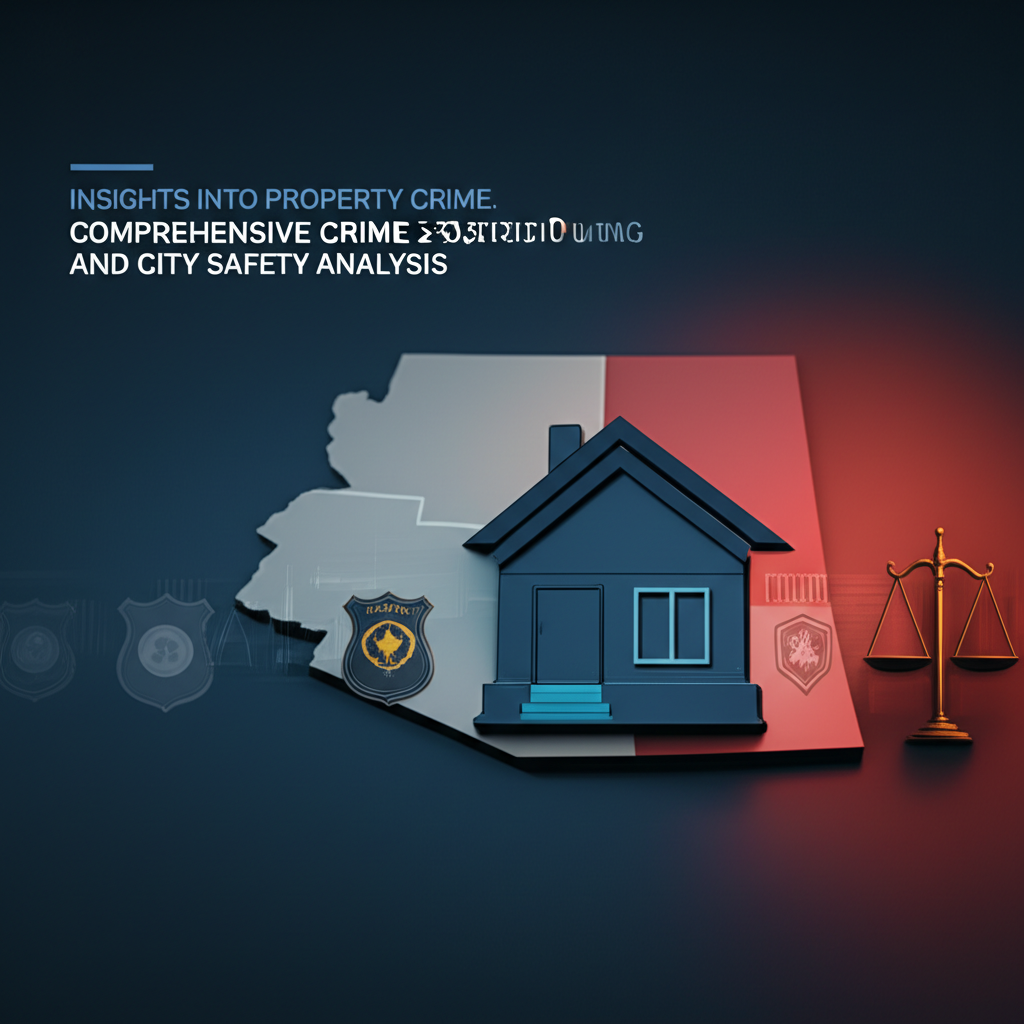
The landscape of property crime in Utah shows a higher volume of cases compared to violent crime, with theft leading the count significantly. The frequency of offenses such as burglary and motor vehicle theft remains below the national medians, offering a hopeful view of security in these areas.
For individuals, the odds of being targeted by property offenses stand at about 1 in 61, which is a critical figure for residents and law enforcement alike. These statistics highlight where attention and preventative measures are most needed to curb losses and enhance community trust. Keeping a watchful eye on these numbers helps shape more effective criminal law enforcement and safety protocols.
- Property crimes account for the majority of reported incidents, with theft being the most frequent.
- Rates of burglary and motor vehicle theft in Utah are below national medians, reflecting relative safety in these categories.
- The chance of becoming a property crime victim in Utah is approximately 1 in 61.
| Property Crime Type | Reported Cases | Rate per 1,000 Residents |
|---|---|---|
| Burglary | 5,798 | 1.70 |
| Theft | 44,906 | 13.14 |
| Motor Vehicle Theft | 5,052 | 1.48 |
Property Crime Rates Relative to National Figures
Examining property crime rates reveals interesting comparisons between Utah and the rest of the country. For instance, incidents of burglary and motor vehicle theft in the state fall notably below national averages, highlighting safer conditions in these particular categories. While theft rates in Utah nearly match the national median, the slightly lower numbers in other property crimes suggest an effective blend of community vigilance and law enforcement efforts. These contrasts underscore the importance of continuous monitoring and targeted crime prevention. Reliable data collection and comparisons across regions allow for informed decisions that can sustain and improve public safety. For further detail, one can visit the Bureau of Justice Statistics website.
| Property Crime Type | Utah Rate | National Median Rate |
|---|---|---|
| Burglary | 1.70 | 2.51 |
| Theft | 13.14 | 13.47 |
| Motor Vehicle Theft | 1.48 | 3.19 |
Crime Density and Geographic Distribution
The measure of crime density offers a perspective on how concentrated criminal activities are in a given area. In Utah, there are about 28 crimes per square mile, a figure slightly above the national median of 26.5. This data is extremely useful for law enforcement agencies and urban planners who rely on such insights to allocate resources effectively. Mapping crime density helps identify neighborhoods and districts where enhanced safety measures or community interventions are urgently needed. These geographic patterns of crime also inform broader criminology studies, enabling authorities to tailor their approach to various urbanization levels and social dynamics within Utah.
- Utah reports 28 crimes per square mile, slightly higher than the national median of 26.5.
- Higher crime density assists in urban planning and law enforcement resource management.
- Geospatial crime data highlights areas requiring targeted safety measures.
| Location | Crimes per Square Mile |
|---|---|
| Utah | 28 |
| National Median | 26.5 |
Safest Cities in Utah and Their Rankings
Identifying the safest cities provides valuable insights for residents and policymakers aiming to foster secure communities. In Utah, Plymouth earns the top spot in safety rankings, closely followed by Montezuma Creek and Wallsburg. These cities consistently report lower crime rates, painting a picture of neighborhoods where crime prevention and effective community safety practices take hold. Such rankings not only reflect local efforts but also contribute strategically to statewide initiatives aimed at reducing crime. Each city’s success story can inspire others, emphasizing the role of social institutions and collaborative action in making Utah a safer place for all.
- Plymouth ranks as the safest city in Utah, followed by Montezuma Creek and Wallsburg.
- Safety rankings spotlight communities with low crime rates, enhancing resident quality of life.
- Municipal safety efforts contribute to statewide crime reduction strategies.
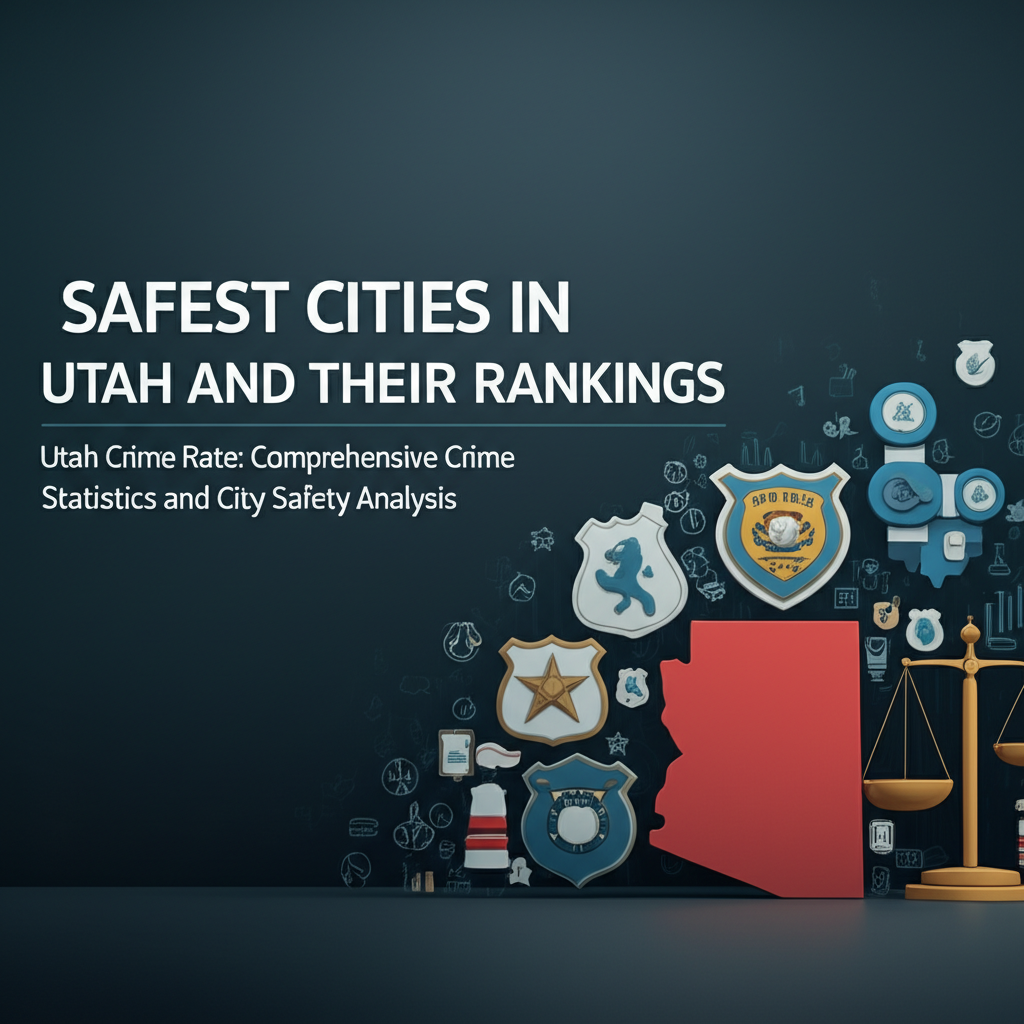
| Rank | City |
|---|---|
| 1 | Plymouth |
| 2 | Montezuma Creek |
| 3 | Wallsburg |
| 4 | Huntsville |
| 5 | Eden |
| 6 | Monticello – La Sal |
| 7 | Evanston |
| 8 | Paradise |
| 9 | Goshen |
| 10 | Annabella – Koosharem |
Overview of Popular Cities in Utah with Crime Considerations
Several cities in Utah attract many residents and visitors, including Salt Lake City, Provo, and West Valley City. These urban areas have available crime data that proves vital for assessing local public safety and understanding demographic influences on crime patterns. Such information guides policy decisions and resource distribution to improve the security and well-being of inhabitants. Awareness of crime conditions helps community leaders tackle challenges more effectively while fostering environments where citizens feel protected. The availability of data across numerous cities forms a strong foundation for ongoing safety improvement efforts statewide.
- Popular cities include Salt Lake City, Provo, and West Valley City among others.
- Crime data in urban areas informs residents and policymakers about community safety conditions.
- Understanding city-level crime assists in resource allocation and public safety planning.
| City | Crime Data Availability |
|---|---|
| Eagle Mountain | [city_crime_row city=”Eagle Mountain” state=”Utah”] |
| Herriman | [city_crime_row city=”Herriman” state=”Utah”] |
| Layton | [city_crime_row city=”Layton” state=”Utah”] |
| Lehi | [city_crime_row city=”Lehi” state=”Utah”] |
| Millcreek | [city_crime_row city=”Millcreek” state=”Utah”] |
| Ogden | [city_crime_row city=”Ogden” state=”Utah”] |
| Orem | [city_crime_row city=”Orem” state=”Utah”] |
| Provo | [city_crime_row city=”Provo” state=”Utah”] |
| Salt Lake City | [city_crime_row city=”Salt Lake City” state=”Utah”] |
| Sandy | [city_crime_row city=”Sandy” state=”Utah”] |
| South Jordan | [city_crime_row city=”South Jordan” state=”Utah”] |
| St. George | [city_crime_row city=”St. George” state=”Utah”] |
| Taylorsville | [city_crime_row city=”Taylorsville” state=”Utah”] |
| West Jordan | [city_crime_row city=”West Jordan” state=”Utah”] |
| West Valley City | [city_crime_row city=”West Valley City” state=”Utah”] |
Crime Data Collection and Methodology
Accurate crime data collection is essential for reliable analysis and effective decision-making. In the United States, figures are gathered via approximately 18,000 local law enforcement agencies, offering a comprehensive nationwide picture. These data sets are updated annually and undergo in-depth meta-analyses to ensure they account for variations in reporting and potential errors.
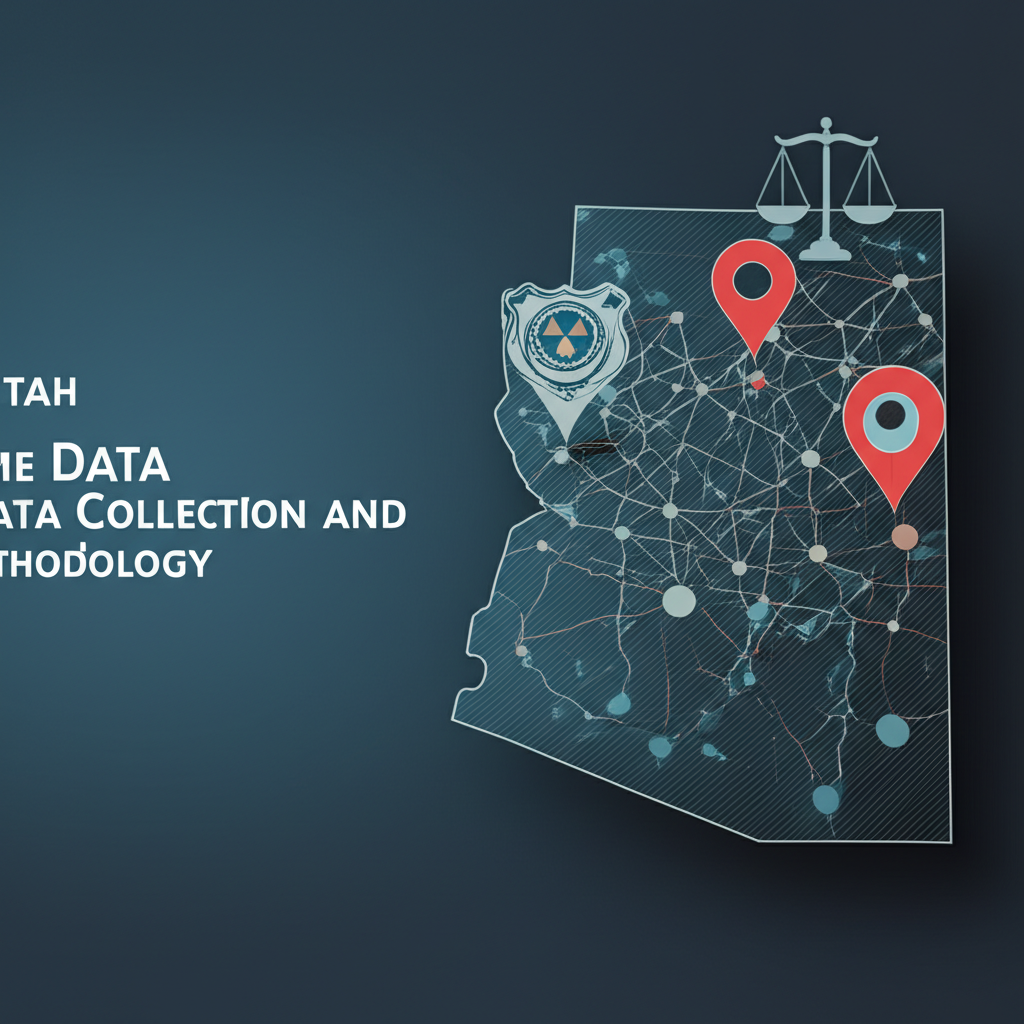
Additionally, incorporating geocoded data points allows experts to study crime distribution with precision, enhancing targeted interventions. This robust methodology supports criminologists and public officials in crafting strategies to improve safety. For those interested, further exploration can be done through the Bureau of Justice Statistics’ website at https://www.bjs.gov/.
- Data collected from approximately 18,000 local law enforcement agencies nationwide.
- Annual updates and extensive meta-analysis ensure accuracy and completeness of crime statistics.
- Geocoded data points enable focused analysis of crime patterns and geographic crime distribution.
Conclusion
In summary, the analysis of crime statistics in Utah reveals a complex landscape of safety and security challenges. While property crimes such as theft and burglary dominate the crime reports, violent crimes including assault and robbery present significant concerns. The state’s crime density and geographic distribution highlight areas requiring focused law enforcement and community safety initiatives.
Despite these challenges, Utah’s crime rates, especially in violent crime, remain below national averages, showcasing the effectiveness of its criminal justice system and law enforcement efforts. The safest cities in Utah serve as models of effective crime prevention and community safety practices. Moving forward, continued attention to crime data collection and analysis will be crucial in addressing the root causes of crime, enhancing public safety, and ensuring justice for all residents.
